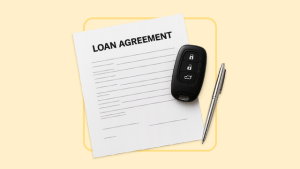Chuck Savage/Getty Images
Key takeaways
- Create an account with your loan servicer to begin making student loan payments.
- Discuss your repayment options with the servicer, which will vary depending on the type of student loan.
- Be sure to know what you owe and adjust your budget to free up disposable income to help make the repayment process more seamless.
If you’re financing your college degree with student loans, it’s a good time to start thinking about when and how you’ll repay your loans. Understanding what you need to do will help you determine your options and what will work best for your situation.
4 ways to start paying off student loan debt
You must set up an account with your loan servicer or lender to make your first student loan payment. You will receive a billing statement before your first payment is due. This statement will tell you the payment amount and the due date, and it may include instructions on how to make the payment.
Here are some strategies to help prepare your finances and get started making student loan payments:
1. Find out who your loan servicer is
Your loan servicer is the company you’ll make payments to. If you have federal loans, you can find your loan servicer by visiting your Federal Student Aid account dashboard or the National Student Loan Data System. If you have private loans, you can check your credit reports if you don’t have your original loan paperwork.
Keep a record of all your loan servicers. You may have several if you’ve taken out multiple loans. You’ll receive regular communication from your servicers about your loan repayment, and you’ll need to make payments to each.
2. Know your total balance and monthly payment
Before starting repayment, confirm your total loan balance and monthly payment by logging into your Federal Student Aid account or your account with your servicer.
You can use a loan calculator to investigate how different repayment timelines will affect your monthly payment and what happens if you make extra payments. You can also ask your loan servicer about income-driven repayment plans or other options to make your monthly payment more affordable.
3. Create a budget
Look for ways to ensure your monthly student loan payment fits your budget without leaving you strapped to pay other bills. For example, see if you can reduce discretionary spending to free up more cash for student loan payments.
4. Set up autopay
Consider setting up automatic payments with your student loans. Doing so can help you lock in any available autopay discounts while helping you avoid missed or late payments. Lenders often offer a 0.25 percent interest rate discount to borrowers who set up autopay.
Repayment options for student loans
Federal student loans are put on a standard, 10-year repayment plan unless you tell your loan servicer otherwise. Most private lenders offer multiple repayment terms ranging between five and 15 or 20 years.
Ask your loan servicers about the options available, including refinancing to establish different repayment terms. With that in mind, research your options to select the best repayment plan for your needs.
- Extended repayment plan: The extended repayment plan sets a repayment timeline of 25 years, with payments that can be fixed or graduated. Direct Loan borrowers must have at least $30,000 in Direct Loans to qualify.
- Graduated repayment plan: Borrowers who expect regular salary increases may benefit from the graduated repayment plan, which starts student loan payments low and increases them gradually over time.
- Income-driven repayment plans: While income-driven repayment plans will extend your repayment period by 10 or 15 years, they can be a good option for lowering your monthly payments. With these plans, your payments will be a percentage of your discretionary income. Any remaining balance will be canceled at the loan term’s end.
- Public Service Loan Forgiveness: With PSLF, borrowers working full time for eligible public service employers can pay down their loans on an income-driven repayment plan for 10 years before having their remaining balances forgiven.
When do you start repaying student loans?
When you start repaying your student loans depends on the type of loan and the repayment plan you’ve worked out with the servicer.
Federal student loans
Most federal student loans require borrowers to begin making payments six months after graduation, drop below half-time enrollment or leave school. This period before you must start paying is called a forbearance or grace period.
Federal student loans come with deferment and forbearance programs that let borrowers skip monthly payments during hardship. You can read about temporary deferment and forbearance options for federal student loans on the Federal Student Aid website.
You can also get relief by setting up your student loans for income-driven repayment. These plans base your monthly payment on your income, and payments can be as low as $0 for those who qualify.
Private student loans
When it comes to private student loans, repayment options and plans vary. Most private student loans let you defer payments until you graduate, and many offer grace periods ranging from six to nine months.
Sometimes, private student loans offer payment plans that let you make interest-only or flat monthly payments during school. You’ll make partial student loan payments once the loan is disbursed.
Unemployment
If your student loan payments become due and you don’t have a job or any other sources of income, you may be able to apply for temporary relief.
Federal student loans come with deferment and forbearance programs that let borrowers skip monthly payments during hardship. You can read about temporary deferment and forbearance options for federal student loans on the Federal Student Aid website.
You can also get relief by setting up your student loans for income-driven repayment. These plans base your monthly payment on your income, and payments can be as low as $0 for those who qualify.
Prepare to pay your loans early
If you’re graduating, leaving school or dropping below half-time status, check with your lender or loan servicer to know exactly when and how to start paying student loans. If you haven’t landed a job yet, ask your lender or loan servicer about relief options.
Bottom line
The best way to create a plan for repaying your student loans is to start by assessing what you owe and contact your student loan servicer to make your monthly payment more affordable.
It’s equally important to adjust your monthly budget to ensure you can afford to make timely payments each month. You can also save some interest and protect your credit rating by setting up automatic payments. Most importantly, assess your progress regularly and adjust your repayment plan, as needed.
Read the full article here












